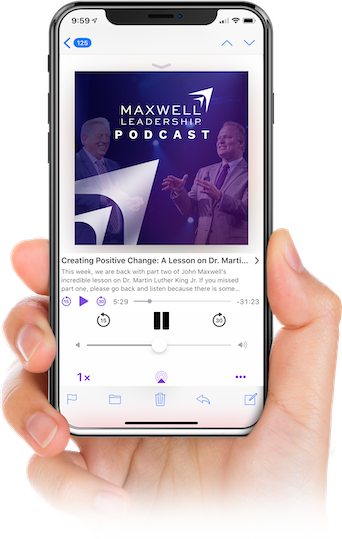The SHARE Framework: How to Use Stories When Public Speaking

Everywhere you look today, ambitious teachers and trainers are looking for ways to improve their public speaking skills – and according to experts, storytelling is the best place to start. Journalist and storytelling expert Christopher Booker wrote,
We spend a phenomenal amount of our lives following stories; telling them; listening to them; reading them; watching them being acted out on the television screen or in films or on a stage. They are far and away one of the most important features of our everyday existence… These structured sequences of imagery are in fact the most natural way we know to describe almost anything which happens in our lives.
And because they’re part of who we are, audience members learn better – more intuitively – when public speakers use them. Cognitive psychologist Jerome Bruner estimates people are 22 times more likely to remember a fact when it has been wrapped in a story. Why? Because stories are memorable, they help us grab the gist of an idea quickly, and they trigger emotion.
John Maxwell’s Guide to Stories in Public Speaking
As a leadership expert with a public speaking career spanning more than 50 years, John Maxwell has distilled storytelling down to a science: the SHARE framework. If you’re looking to improve your communication skills, study it closely.
1. SHOW: WHAT DO I WANT THEM TO SEE AND HEAR?
What is the essence of the story you want to tell? Is there anything in it that doesn’t need to be there, any detail that doesn’t contribute? Playwright Anton Chekhov advised, “Remove everything that has no relevance to the story. If you say in the first chapter that there is a rifle hanging on the wall, in the second or third chapter it absolutely must go off. If it’s not going to be fired, it shouldn’t be hanging there.”
Selecting what to include and what to remove from a story takes some practice. Some people write them out to decide what to include. Then when you tell a story, pay attention to your audience’s reaction, and make adjustments for the next time you tell it. Stand-up comedians do this all the time.
2. HELP: HOW WILL TELLING THIS STORY HELP THEM?
Why does anyone speak? At its heart, public speaking is the art of transformational communication – public speakers speak powerfully to tech effectively.
Give the audience a takeaway in every story you tell. Generally, s story with application is a story with a happy ending. Storytelling expert Don Yaeger calls this “defining your storytelling ROI.” He recommends speakers ask themselves, What do I want the listener to do, think, or feel when they’ve heard my words?
Can you tell stories simply to entertain your audience? Of course. But why not get all the value out of a story that you can? The better you align your stories to the purpose of your presentation, the greater the impact they will have.
3. AMPLIFY: WHAT DO I WANT THEM TO IMAGINE?
Stories have the potential to help people dream, explore, and expand their lives. That requires creativity from the presenter. One of the best ways to enter a creative space as you work on a story is to maintain a beginner’s mindset. As teacher and author Shunryu Suzuki said, “In the beginner’s mind there are many possibilities. In the expert’s mind there are few.”
When Walt Disney was in the fifth grade, his teacher gave the class an art assignment. When she saw Walt’s drawing, she saw that his flowers had faces. “Walter, flowers don’t have faces,” she admonished.
Brightly, he responded, “Mine do!”
Walt Disney harnessed his imagination as a boy—and continued to do so as an adult, always keeping that joyful, creative, beginner’s mindset. He dreamed big dreams and helped others do the same. As Jamie Buckingham wrote, “Across the years that dream materialized into a mouse who talked, an elephant who flew, a cricket who danced, and flowers—thousands of flowers—all with faces.”
Your imagination can fuel your audience’s imagination. It’s been said that imagination is given to us to compensate for what we are not, and a sense of humor to console us for what we are. Find ways to use both. As you fine-tune your story, think about how you can expand possibilities for people and help them engage their higher aspirations.
4. RELATE: WHAT DO I WANT THEM TO FEEL?
Stories serve as powerful public speaking aids because they connect with the audience. Listeners see themselves in the characters. They’re learning, then suddenly, they are the center of attention. They’re feeling. They care.
If you want to tell a connecting story, put your own emotions into it. Don’t be afraid to show people that you care about what you’re talking about. Storytelling is built on humanity. It connects with others when it contains emotion.
The stories Martin Luther King Jr. often told during the civil rights movement illustrate the power of emotion. Author and historian Donald T. Phillips described how King used stories:
He also often told the story of an elderly, “toil-worn woman in Montgomery” who began her “slow, painful four-mile walk” to work. “It was the tenth month of the Montgomery bus boycott,” Martin said. “The old woman’s difficult progress led a passerby to inquire sympathetically if her feet were tired. Her simple answer became the boycotters’ slogan. ‘Yes, friend, my feet is real tired,’ she said, ‘but my soul is rested.’ ” In fact, it was Martin Luther King Jr. who made that simple answer the boycotters’ slogan, by telling the story every chance he got.
King’s stories generated deep feeling in his audience. Yours should too.
5. ENJOY: HOW CAN I MAKE THE STORY FUN AND UNFORGETTABLE?
When you’ve accomplished the first four parts of SHARE—Showing what you want people to see, telling the story to Help them, Amplifying what you want them to imagine, and Relating what you want them to feel—you’re ready to make your story as Enjoyable as possible. How can you do that? By paying attention to how you communicate the story. The telling can take a good story and make it a great story.
Humor, for example, is an efficient tool for making a story enjoyable. You can get your point across with less verbiage when it’s funny. Humor also breaks down barriers. You will be amazed at the things you can say and the ideas you can establish in people’s hearts and minds using humor. Laughter causes people to lower their guard. Using humor, we can approach difficult subjects in a nonthreatening way and make people think.
As somebody once said, laughter is like a windshield wiper. It doesn’t stop the rain, but it helps us to keep going. If you’re naturally funny, use that skill when you tell stories. If you’re not, then find ways to have fun, because that will make your presentation fun for your audience.
How can you go further, faster in developing your public speaking?
The short answer is, you can learn from the pros. Did you know that Maxwell Leadership has certified more than 50,000 speakers, coaches, trainers, and entrepreneurs? If you’re looking to make a career pivot into speaking, or you already do public speaking, using the proven Maxwell Method of Speaking will help you become a better speaker, communicator, and presenter. Talk to a Program Advisor today.
Dr. John C. Maxwell has been a public speaker and motivational teacher for more than 50 years. In his book, The 16 Undeniable Laws of Communication, he shares everything he’s learned from a lifetime of communication. This blog post has been adapted from the book’s twelfth chapter, “The Law of Storytelling.”
More Articles

Do I Believe The Best In Others?

BIG ANNOUNCEMENT!









Be the first to comment on "The SHARE Framework: How to Use Stories When Public Speaking"